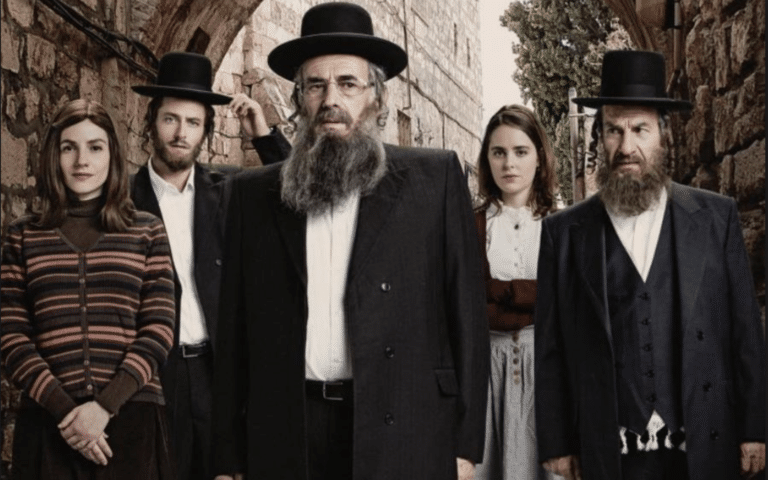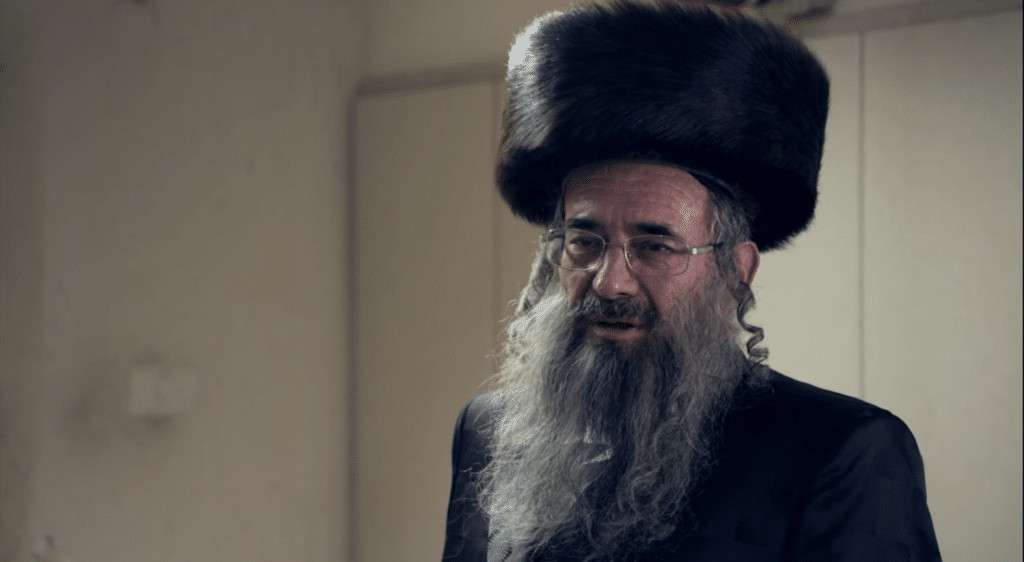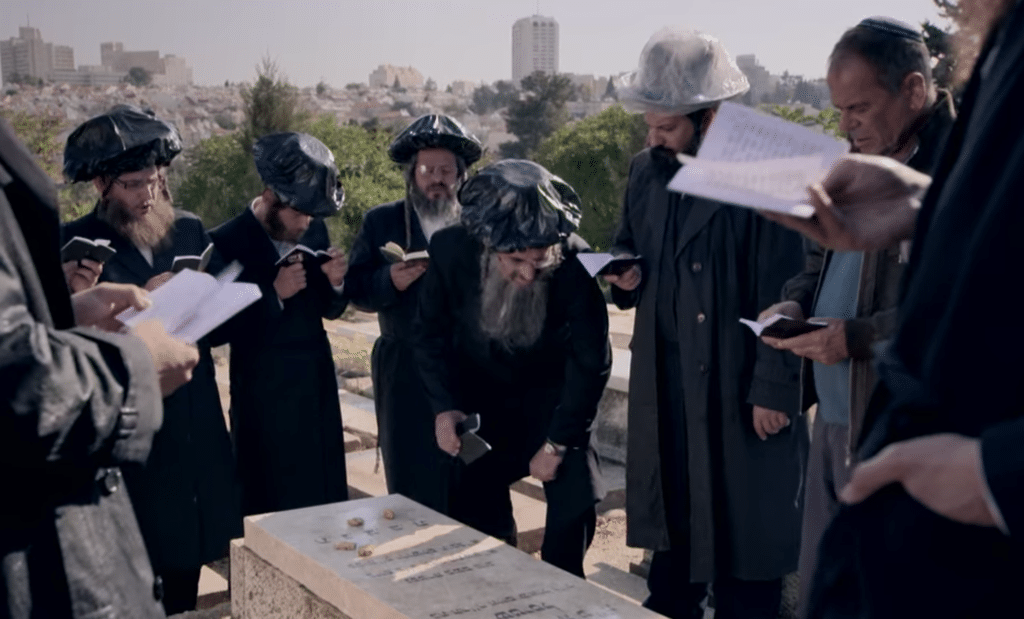
It’s been a while since we last caught up with the beloved Shtisel family, but they’re finally back! And facing newfound challenges in Season 3 of the show, which made its Netflix debut on March 25th.
Since the show’s premiere in 2019, Shtisel has captivated the hearts and minds of Jews and non-Jews alike. The series chronicles the lives of the Ultra-Orthodox Shtisel family and their unique personal struggles dealing with love and loss. What distinguishes Shtisel from any other standard television drama is that it invites viewers into the insular Haredi world, and it does so with the principles of authenticity, respect and love for a community at the forefront of the show’s plot.
Given the long-awaited return of the series to Netflix, we’re unpacking everything you need to know about Shtisel, answering your behind-the-scenes questions, and whether another season might be in the works.
Shtisel, Unpacked
Shtisel is set in the Haredi neighbourhood of Geula, located in central Jerusalem, bordered by the equally Haredi neighborhood of Mea Shearim. Both these neighborhoods, which are brought to life in Shtisel, are primarily populated by Hasidic and Litvak Haredim. To an outsider, all black-hatted Jews may seem like a homogenous group, but the Haredi community is made up of multiple subsects.
While there are plenty of intricate differences between Hasidic and Litvak Jews, one identifiable marker is that many Hasidim wear Shtreimels (large, round fur hats) on Shabbat, holidays and special occasions, while Litvak Jews wear fedora-looking black hats.

How Accurate is it?
From the costumes to the sets, perhaps the main question that arises while watching Shtisel is just how accurate the show portrays the Haredi community in Israel.
We’ve spoken with an Ultra-Orthodox community insider, who has asked to be kept anonymous, about the authenticity of Shtisel’s portrayal and its reception within the community.
According to him, Shtisel hits the nail right on the head.
“We were like, ‘wow!’ we finally get to see someone on TV that looks like us, and is portrayed properly,” he said about his family’s reaction to Shtisel, in comparison to the often stereotypical portrayals of Ultra-Orthodox Jews in popular media.
Speaking of hats, our source said many Orthodox men go to great lengths to maintain their hats, especially against poor weather conditions.

“Those rain tops they show are super common, because hats have to be worn at prayer time, and if you have to walk to [synagogue] in the rain, you have to have a protective covering,” he explained.
“Everybody who owns a fancy hat, who doesn’t really have money for more hats, wants to make sure they don’t get wet because that ruins it and they’re very expensive.” While you can purchase a simple Kippah for as little as a few dollars, Haredi hats and Shtreimels can cost thousands upon thousands of dollars.
Though some parts were obviously dramaticized, for the most part, the details were spot on, according to him. “If you have a keen eye, you could tell that some things were costumes. Like beards and peyot were a tiny bit off, but overall, they really nailed it without being stereotypical. It was just a portrayal of actuality.”
From the Filmmakers Perspective
That is exactly what the show set out to do, said Ziv Naveh, CEO and artistic director of the Gesher Multicultural Film Fund, which is behind Shtisel.
The fund aims to “enrich the screen with films that represent the wealth and diversity of the Jewish story,” reads their website.
According to Naveh, her organization doesn’t just provide monetary support to films and shows, but it also ensures that they are held to a high standard of authenticity, seeing to it that the communities depicted are represented in a true and responsible manner.
“That wasn’t an issue with Shtisel, because both Ori Elon and Yehonatan Indursky (the writers and co-creators of Shtisel), had a background in religious communities,” she explained. “They were sharing the story of a community they knew from within, so they came to it with a lot of love and respect for the community.”
Prior to creating Shtisel, Ori Elon was a screenwriter for the Israeli drama series, “Srugim,” about Modern Orthodox singles in Jerusalem. Yehonatan Indursky grew up in a Haredi home in Givat Shaul, a religious neighborhood in Jerusalem. He spent three years attending the Litvak Ponevezh Yeshiva in Bnei Brak, which is a prominent Litvak Yeshiva, before deciding to leave the Yeshiva world for secular society, he explained in an interview.
With a commitment to authenticity, the production crew brought in Haredi filmmaker Shalom Eisenberg, who grew up in Mea Shearim, to help the actors immerse themselves in ultra-Orthodox Jerusalem culture by visiting homes and restaurants in the neighborhoods, and were even hosted for Shabbat on several weekends, producer Dikla Barkai told the Times of Israel.
Though perhaps not noticeable to an English-speaking audience, the show’s dialogue switches flawlessly between Hebrew and Yiddish, the two primary languages spoken by Haredim in Israel. In order to make this happen, the actors had to take a crash course in Yiddish, said Barkai.
“This isn’t a series that looks at [Haredim] like animals in a zoo,” she explained in the interview. “This doesn’t condescend. This tells their story without pretension, without judgment.
Clearly this has been the case, at least from the perspective of our community insider.
“I’m just excited that it’s back! Because it’s deeply affirming for me to see,” he said. “Immediately after watching the show, I texted my brother and I was like, ‘Wow, we are all Shtisel. That’s our family.’”
What’s Next?
Don’t worry, we won’t share any Season 3 spoilers quite yet. We’ll be unpacking the new season very soon. But for now, we’ve got good news for fans of the show. We wanted to know whether audiences can expect one more season to follow? And if so, would the break between seasons take just as long?
“The real reason [for the break between Season 2 and 3] was that the filmmakers weren’t sure if they wanted to do another season, they also wanted to do other things,” Naveh explained. Amongst the other projects they considered, one was doing a spinoff of Shtisel instead. “But I think what convinced them to do Season 3 is that there were so, so many requests from the audience.”
Producer Birkai said another challenge was getting all the actors together after multiple years. Especially, since many of the actors had grown in fame since the show aired on Netflix.
“They all wanted to be part of the third season, but it’s a challenge to bring them back to the same place, with the same kinds of salaries and production,” Birkai told The Times of Israel. “This is a modest series and a modest production, with a typical Israeli budget, and the actors are now much better known, with different expectations and market recognition.”
“I can’t speak for the filmmakers,” concluded Naveh. But regarding whether the funding would be available if Elon and Indursky did want to move forward with another season, she said, “If you’re asking me, I think we would be in.”
Originally Published Mar 25, 2021 10:31PM EDT
